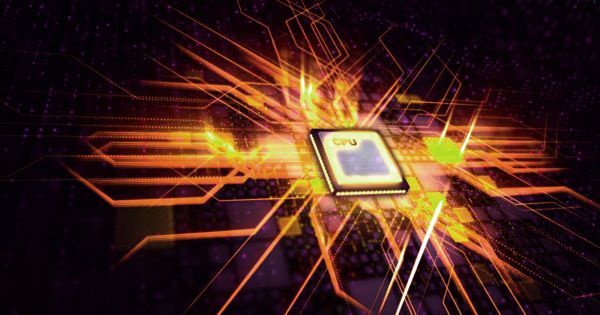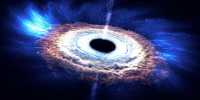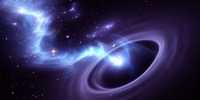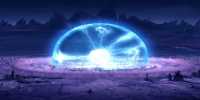The research team at Lawrence Berkeley National Laboratory (Berkeley Lab) used a quantum computer to successfully model an aspect of particle collisions that are usually ignored in high-energy physics studies, such as those at CERN’s Massive Hadron Collider. The quantum algorithm they have developed accounts for the difficulty of Parton showers, which are complicated particle bursts created in collisions involving particle processing and decay processes.
Researchers used a quantum computer to successfully simulate an aspect of particle collisions that is typically neglected in high-energy physics experiments
Quantum computation uses the concepts of quantum mechanics for the retrieval of knowledge. Owing to this, quantum computation involves a different approach than classical computing. An example of this disparity is the processor used on quantum computers. When traditional computers use familiar silicon-based processors, quantum computers use quantum structures such as atoms, molecules, photons, or electrons. They use their quantum properties to represent bits that can be prepared in a number of quantum superpositions of 1 and 0.
Classical algorithms commonly used to model parton showers, such as the famous Markov Chain Monte Carlo algorithms, neglect a variety of quantum-based consequences, the researchers noted in a report published online on Feb. 10 in the journal Physical Review Letters that outlines their quantum algorithm.
“In essence, we’ve shown that you can put a parton shower on a quantum computer with efficient resources,” said Christian Bauer, leader of the Theory Group and chief investigator for quantum computing efforts at the Berkeley Lab Physics Division, “and we’ve shown that there are some quantum effects that are difficult to describe on a classical computer that you could describe on a quantum computer.”
Their method meshes quantum and classical computation: uses the quantum solution only for the portion of particle collisions that cannot be dealt with by classical computing, and uses classical computing to deal with all other aspects of particle collisions.
Researchers also built a so-called “toy model,” a condensed theory that can be run on a real quantum computer but also retaining enough complexity to preclude it from being replicated using classical methods.
“What a quantum algorithm does is calculate all possible outcomes at the same time, and then choose one,” Bauer said. “As the evidence becomes more and more reliable, our theoretical forecasts need to be more and more accurate. And at some point, these quantum effects are getting large enough that they really exist,” and they need to be accounted for.
In designing their quantum algorithm, researchers have factored in the various particle processes and outcomes that may occur in a parton shower, taking into account the particle condition, the background of particle emissions, whether emissions have occurred, and the amount of particles generated in the shower, including separate counts for bosons and two forms of fermions.
The quantum computer “computed these histories at the same time, and summed up all of the possible histories at each intermediate stage,” Bauer noted.
The research team used the IBM Q Johannesburg chip, a 20 qubit quantum computer. Every qubit, or quantum bit, is capable of representing a zero, a single, and a so-called superposition state in which it represents both a zero and a single at the same time. This superposition is what makes qubits uniquely efficient relative to regular computational bits, which can be zero or one.
Researchers have designed a four-step quantum computer circuit using five qubits, and the algorithm involves 48 operations. Researchers also recognized that noise in the quantum machine is likely to be the source of variations in outcomes with the quantum simulator.
While the team’s groundbreaking attempts to extend quantum computation to a condensed portion of particle collider data are encouraging, Bauer said that he does not expect quantum computers to have a major effect on high-energy physics for many years – at least before hardware improves.
Quantum computers would require more qubits and much lower noise to allow a major breakthrough, Bauer said. “A lot depends on how quickly the machines get better.” But he acknowledged that there’s a massive and increasing push to make it possible, and it’s important to start thinking about these quantum algorithms so that they’re ready for the forthcoming hardware advances.
Such quantum leaps in technology are the main focus of the Energy Department’s joint quantum R&D center that Berkeley Lab is part of, called the Quantum Systems Accelerator.
As hardware advances, it will be possible to account for more forms of boson and fermion in the quantum algorithm, which will increase its precision. Such algorithms would potentially have a wide influence in the area of high-energy physics, he said, and could even be used in heavy-ion-collider experiments.















